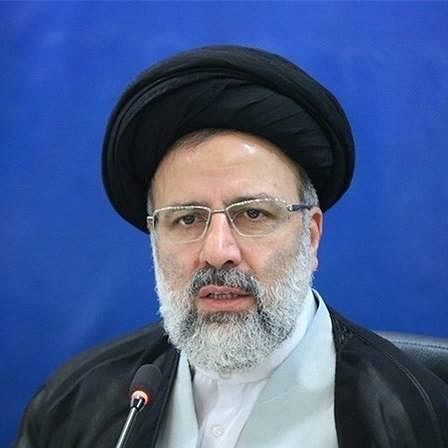There is little doubt that the Iranian clerical establishment led by Supreme Leader Ayatollah Ali Khamenei worked through the complex and guided political system of the country for the success of Ebrahim Raisi in the Presidential elections held on June 18. It got its way for Raisi easily won the election securing 62% of votes cast though the voter turnout at 48% was the lowest in any Presidential election since the Islamic revolution in 1979. This can only be partially explained by the Covid pandemic. It was more a signal of dissatisfaction with the current system’s inability to improve the economic condition of the people. Raisi and more importantly Khamenei will have to take note of this popular protest though this cannot be even remotely interpreted as constituting a current danger for Iran’s basic governance system rooted in the Vilayat-e-Faqih. Raisi will take over as President in early August from the current incumbent Hassan Rouhani.
Ayatollah Khomeini, who roused the Iranian masses to rise against the Shah, was a renowned Islamic theologian. He was committed to a political system which was led by theologians who were recognised authorities in Islamic jurisprudence so that governance was in accordance with the faith. This was the essence of the Vilayat-e-Faqih. It was not accepted by traditional religious leaders who did not want theologians to directly participate in governance but to guide the rulers. But Khomeini had his way and the Islamic system followed by Iran has, as its Supreme Leader, one who is ‘elected’ by an 88-member Assembly of Experts who in turn are elected by the people. Each candidate for this Assembly has to be an expert in Islamic jurisprudence and has to be cleared by a Guardian Council which consists of 12 members of which half are selected by the Supreme Leader and the rest elected by the Iranian parliament from among the nominees of the Chief Justice, who is appointed by the Supreme Leader. The Guardian Council has also to approve all Presidential Candidates as well as candidates for parliament.
The fundamental essence of the Vilayat-e-Faqih is that once a Supreme Leader is chosen, he virtually permanently occupies the position. Thus, there have been only two so far: Ayatollah Khomeini, who needed no election for he was the Rahbar and after his death in 1989 Ali Khamenei who was then Iran’s President. It is significant that a few months before his death Khomeini had dismissed his then chosen successor Ayatollah Hossein-Ali Montazeri. A great deal of behind-the-scenes politics had ensued to make Khamenei as the Supreme Leader for he was not in the front rank of theologians. Nevertheless, for the past 32 years he has been the ultimate Iranian decision maker but he is now 82 years old and there is speculation that Raisi may be in consideration as his successor.
In considering the importance of the Iranian Presidency another consideration has to be taken into account. In addition to the formal structures of governance there is a parallel structure, including with an effective intelligence and coercive apparatus, which has continued since the 1979 revolution and is committed to preserve it both within and from dangers abroad. The Supreme Leader controls the parallel structure directly but the day-to-day functioning of the government both in the internal and external dimensions is with the President under the guidance of the Supreme Leader. Hence, the President’s ideological orientations are important.
Raisi has spent his professional life mainly connected with the judicial branch and is known for pursuing hard line and conservative interpretations of the law. He has been Iran’s Chief Justice since 2019 and is obviously close to the Supreme Leader. In his first interaction with the media after his election he showed that he will favour inflexible positions against the West. He rejected key US demands of Iran stopping its support for Shiite militias in West Asia and stop its missile developments. He is unlikely therefore to attempt to influence Iranian approaches worked out under the Supreme Leader on key issues surrounding US-Iran discussions on the Biden administration reversing Trump’s policy of abandoning the Iran nuclear deal. What will be interesting to observe is if the US and Iran will attempt to finalise matters relating to the deal in the next few weeks during the remaining period of Rouhani.
The immediate region would be closely studying Raisi. This especially applies to the Sunni states of the Arab peninsula. These Arab countries led by Saudi Arabia have a profound distrust of Iran for reasons of faith as well as geo-politics. They will seek to ascertain if Raisi will encourage Khamenei’s orthodox urges or seek to moderate them with a degree of pragmatism. It is difficult to see if he will follow the latter course especially if he is really aspiring to be Khamenei’s successor. For this, he will have to above all, ensure that he has the support of the parallel apparatus of Iran which is committed to the preservation of the Vilayat-e-Faqih.
Raisi will assume office at a time when Iran has moved close to China and Russia. There is a Sino-Iranian agreement under which China will spend billions of dollars over a twenty-year period to strengthen Iran’s infrastructure. Iran has also become a part of China’s Belt and Road Initiative. It can be anticipated that he will do nothing to disturb this arrangement. Not much is publicly known about Raisi’s orientation towards South Asia including India but can anyone in West Asia really ignore India’s weight in the region and beyond?
Disclaimer: The views and opinions expressed in this article are the personal opinions of the author. The facts, analysis, assumptions and perspective appearing in the article do not reflect the views of GK.







